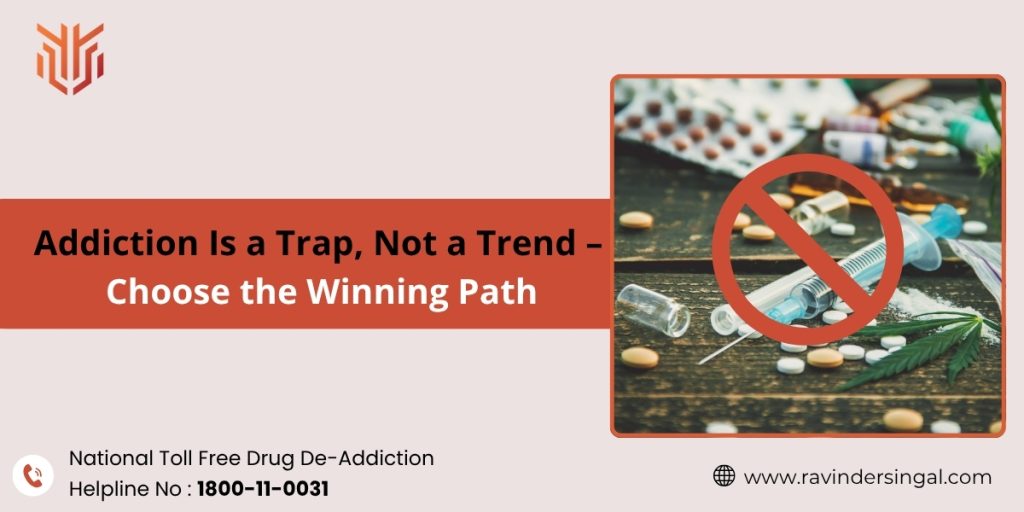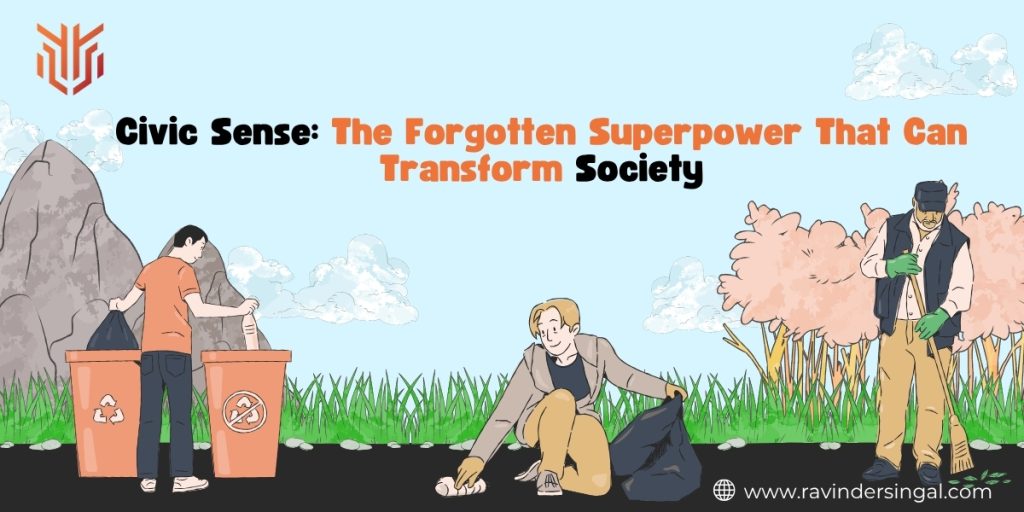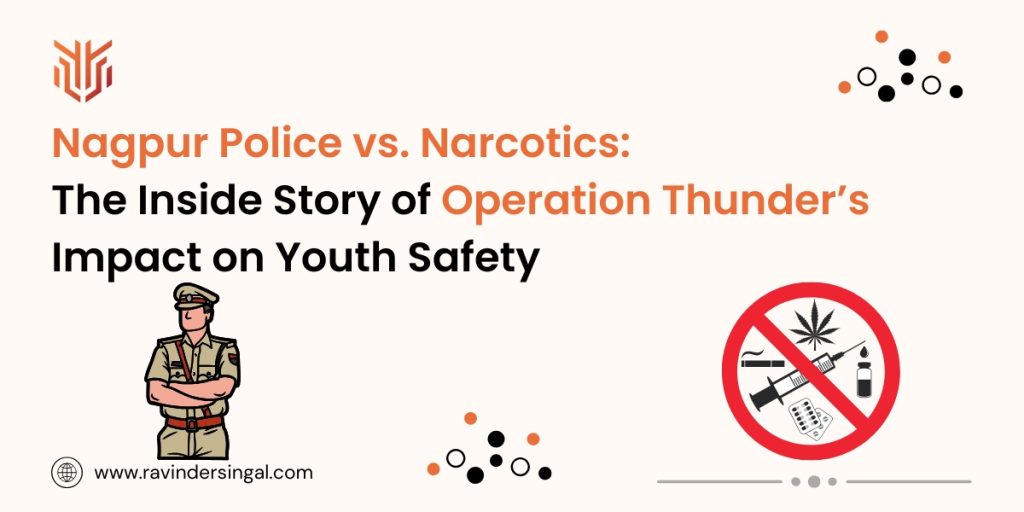Breaking the Silence: Community Involvement in Fighting Crime and Drugs
– Dr. Ravinder Singal, IPS
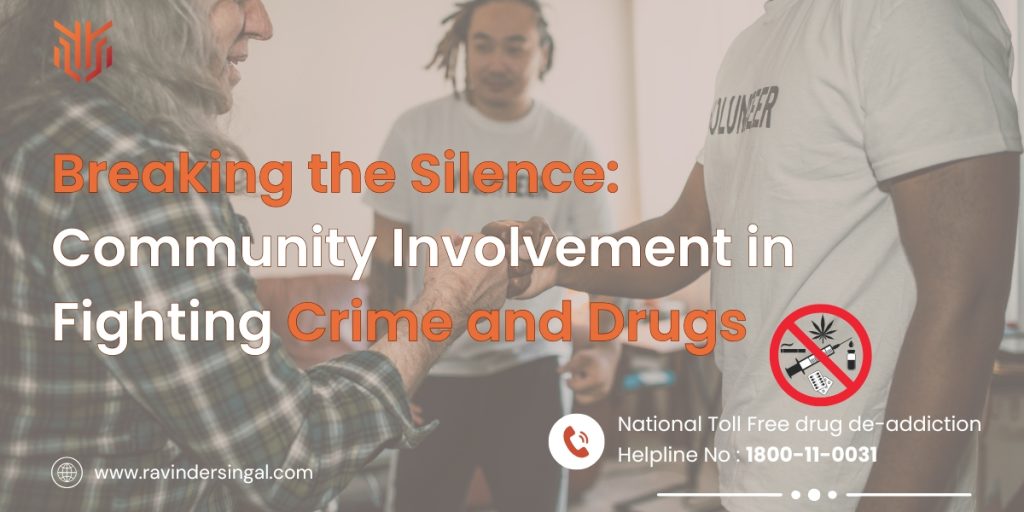
Crime and drug abuse are not just issues for the police or law enforcement agencies to tackle alone. These are deeply rooted societal problems that demand collective action. As someone who has worked closely with the public and police forces for decades, I have witnessed firsthand the transformative power of community involvement in crime prevention. When communities come together with a shared mission, they can become powerful agents of change, protecting youth, deterring crime, and creating a safer, healthier society.
Why “Breaking the Silence” Matters
Silence is one of the most dangerous responses to crime and drugs. It allows criminal elements to operate in the shadows and enables substance abuse to spread unchecked. Breaking the silence on crime and addiction is not just about speaking upit’s about stepping up. Every citizen has a role to play, and when empowered, communities can be a force more powerful than any policy.
Key community-driven crime reduction strategies include:
- Forming neighborhood watch programs
- Organizing regular meetings with the police
- Sharing anonymous tips and observations
- Creating safe spaces for youth
- Promoting values of lawfulness and responsibility
Community Involvement in Crime Prevention
Community involvement in crime prevention means more than just reporting suspicious behavior. It means being proactive: organizing, educating, and taking initiative. Local residents often notice unusual patterns long before law enforcement can intervene.
One striking example is a small group of women in Maharashtra who formed a safety patrol in their locality, significantly reducing petty crimes. Their dedication demonstrated that with collective courage, crime can be prevented.
Benefits of community involvement:
- Improved trust between police and public
- Quicker response to threats
- Increased deterrence through vigilance
- A culture of accountability and civic duty

Community Fight Against Drugs: A Collective Mission
Drug abuse, especially among youth, is a growing concern. But the community fight against drugs is gaining momentum, and rightly so. No single institution can address the root causes of addiction alone it requires collaborative, grassroots action.
As I’ve observed in campaigns like “Operation Thunder” in Nagpur, community members were instrumental in identifying illegal drug networks and sharing critical intelligence. This shows how even ordinary citizens can play extraordinary roles.
Community Drug Prevention Programs: Building a Wall of Resistance
To stop drug abuse in communities, we must invest in community drug prevention programs that:
- Educate children and parents about risks
- Provide counseling and support to families
- Engage local influencers in spreading awareness
- Encourage skill-building and job opportunities to steer youth away from addiction
Successful programs in cities like Pune and Nagpur have shown that when society joins hands with police, prevention becomes powerful.
How Communities Can Stop Drug Abuse: Practical Approaches
Here’s how communities can stop drug abuse in their own neighborhoods:
- Conduct awareness drives: Spread verified information about the harmful effects of drugs through posters, social media, and school campaigns.
- Set up help desks or hotlines: Community-run helplines can encourage anonymous reporting and provide assistance.
- Collaborate with rehab centers: Provide support for addicted individuals instead of only resorting to punitive action.
- Youth mentorship programs: Pair vulnerable youth with role models and coaches to offer guidance and support.
Neighborhood Crime Watch Programs: Eyes on Every Corner
Neighborhood crime watch programs are one of the most effective ways to foster safety. Involving citizens in patrolling and monitoring not only builds trust but also boosts morale and unity.
These programs work best when:
- Run by community leaders
- Supported by local police
- Regularly updated with actionable data
- Reinforced with training sessions
Grassroots Crime Prevention Strategies
Grassroots crime prevention strategies are community-initiated and community-led. These bottom-up approaches empower locals and generate sustained impact.
Some effective methods include:
- Street theatre and local events to raise awareness
- Organizing night watches
- Creating community resource centers
- Promoting livelihood opportunities
Citizen Role in Fighting Crime and Drugs
Never underestimate the citizen’s role in fighting crime and drugs. You don’t have to wear a uniform to make a difference. Whether it’s a parent speaking to their child, a shopkeeper refusing to sell banned substances, or a teacher raising awareness, every action counts.
Community Policing Success Stories
In Nagpur, our community policing efforts have helped reduce narcotics-related incidents dramatically. One notable initiative involved volunteers patrolling vulnerable zones alongside police, leading to multiple successful busts. This story – and many others – are testimony to the power of collaboration between police and the public.
Building Safer Neighborhoods Together
Building safer neighborhoods together involves a layered approach:
- Crime mapping
- Preventive arrests
- Awareness sessions
- School involvement
- Cultural and recreational programs
The goal is to create a network of conscious, alert, and responsible citizens.

Public Awareness on Drug Abuse: The First Line of Defense
One of the strongest defenses is public awareness on drug abuse. Through consistent campaigns, posters, school talks, and digital content, we can flood the market of misinformation with facts and empathy.
Youth Engagement in Crime Prevention
Today’s youth are tomorrow’s leaders. Their engagement in crime prevention is crucial.
- Conduct youth parliaments
- Include them in local safety committees
- Encourage participation in anti-drug marathons, drives, and debates
Young minds can be inspired to become change-makers when shown the path.
Community Outreach for Drug Education
Community outreach for drug education must be consistent and relatable:
- Use real-life stories
- Leverage social media
- Collaborate with NGOs and schools
- Host open forums and town halls
Reducing Crime Through Local Involvement
Reducing crime through local involvement means empowering residents with knowledge and responsibility. Educating every household about crime trends and prevention mechanisms can make communities self-sustaining.
Anti-Drug Campaigns by Communities
From “Mission AXE” to “Say No to Tobacco” rallies, anti-drug campaigns by communities create an ecosystem of resistance. What starts as a small voice can become a movement if nurtured with sincerity and consistency.
Empowering Citizens to Act Against Crime
When we talk about empowering citizens to act against crime, it’s about:
- Equipping them with tools (apps, hotlines, protocols)
- Encouraging whistleblowing
- Celebrating local heroes
A vigilant citizenry is a free society’s greatest strength.
Conclusion
As a public servant, I have always believed that enforcement without engagement is incomplete. We must break the silence and encourage community involvement in crime prevention and the fight against drugs. Only when the public joins hands with the police can we achieve true progress. Every citizen is a stakeholder in public safety. Let’s raise our voices, open our eyes, and protect our future together.
Let’s build a drug-free and crime-free society – not through fear, but through unity and awareness.
To know more about my work and initiatives, visit https://ravindersingal.com
Frequently Asked Questions (FAQs)
1. What is community involvement in crime prevention?
A: It refers to citizens actively participating in preventing crime through vigilance, reporting, and local initiatives like watch groups.
2. How do communities help in fighting drugs?
A: Communities can run awareness drives, support addicts, cooperate with police, and create alternatives for at-risk youth.
3. What role do youth play in crime prevention?
A: They serve as ambassadors of change. Through awareness and education, youth can discourage peers from engaging in criminal behavior.
4. What is the importance of neighborhood crime watch programs?
A: They create a network of informed and alert citizens who serve as the first line of defense against local crime.
5. How can I contribute to a drug-free community?
A: By staying informed, educating others, reporting illegal activity, and volunteering in community outreach programs.
Follow me on Social Media! Stay Connected & Stay Ahead!
📘 Facebook || 📸 Instagram || 💙 Twitter || 💼 LinkedIn || 📍 Pinterest || ▶️ YouTube
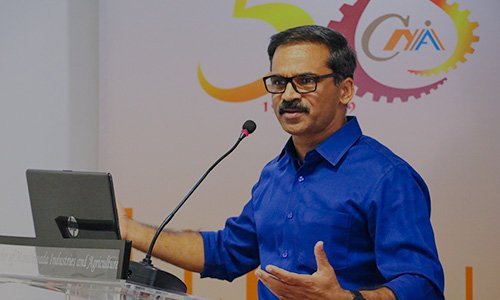
Quitters Don’t Win and Winners Don’t Quit.
Ironman | Deccan Cliffhanger | Comrade Legend Finisher | Motivational Speaker | Writer | Endurance Athlete



